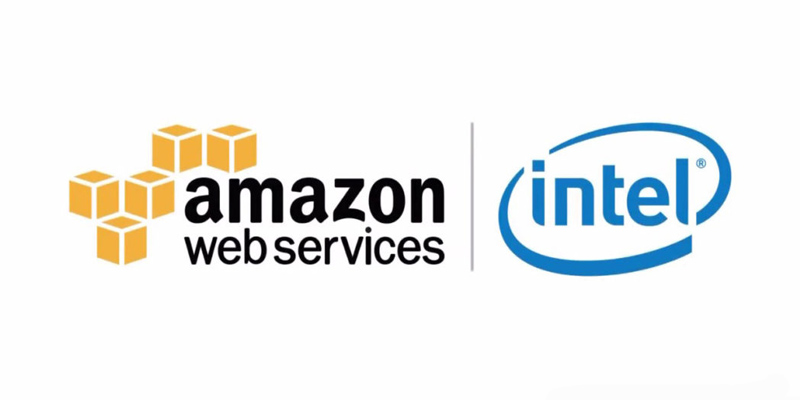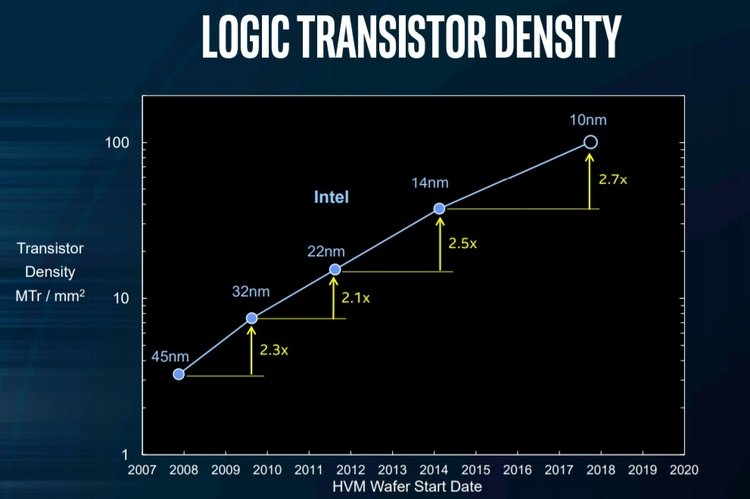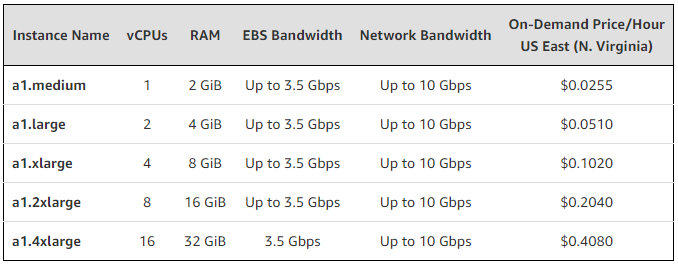What Intel is doing and why Amazon will not transfer AWS entirely to its chips despite loud headers
 If you are lazily watching the latest news, looking through the headlines in your feed, over the past two years you have come across passages of about the same level: “Amazon struggles with Intel domination and starts production of its server CPUs”, “Intel loses significant market share”, “Amazon refuses Intel processors”, “Amazon's ARM processors are under development from Amazon”, “Intel is transferring a consumer release of 10 nm CPU” and finally “Intel will introduce a 7 nm processor in 2020”.
If you are lazily watching the latest news, looking through the headlines in your feed, over the past two years you have come across passages of about the same level: “Amazon struggles with Intel domination and starts production of its server CPUs”, “Intel loses significant market share”, “Amazon refuses Intel processors”, “Amazon's ARM processors are under development from Amazon”, “Intel is transferring a consumer release of 10 nm CPU” and finally “Intel will introduce a 7 nm processor in 2020”. Of course, these headers are very approximate and if you are not engaged in server maintenance or do not rent power from AWS, then all this is of little concern to you. Well wallow there giants among themselves as the girls at the party beating up each other bags full of money, with Qualcomm and AMD are each their development, NVIDIA's some movement from them the CUDA, but Apple as always quietly in the corner
Where does all this noise come from
The beginning of the trend for the infill of Intel began when the company announced problems with the mass production of 10 nm chips and announced a postpone release. They waited for the chip back in 2016 as part of the CPU Cannon Lake series, but Intel didn’t work well and the development time was repeatedly postponed. Here is their old roadmap:

You can also add here a repeated violation by the company of its own “new process technology - performance improvement” cycle and we have a situation in which the company became the target of attacks from various publications and media. Conversations around this technology have reached the point that materials have begun to appear on the network, the authors of which claimed a total rejection of 10 nm as such. Like, we all stay on the current 14 nm chips in the near future.
The company responded quickly enough and stated that “refusal to develop 10 nm chips” is a banal overthrow:
On the other hand, the issue of proximity of 7 nm chips from the giant is discussed in not very clean media, and the logic in these discussions is quite simple: “until 10 nm is reached, 7 nm will not be either”. This is not true. Probably, the probability that 7 nm will appear before the “ten” is, but the marketers of the company will not allow it. But how is this possible?
The development of chips with architectures 10 and 7 nm involved fundamentally different engineering teams. That is, processors with a step of 7 nm are not the heirs of the technical solutions of the "dozens" and are developed in parallel with 10 nm chips. At the same time, the team that works on the 7 nm was more successful than their colleagues, as Intel itself declared in the person of development director Murthy Renduchintala (Murthy Renduchintala).
The main problem of the transition to the 10-nm process technology is Intel's desire to increase the density of transistors per square millimeter by 2.7-fold on the same lithography technology that is now used to produce other serial models of the company.

Roadmap companies to increase the number of transistors from process technology to process technology
But why is there no such problem with the development of 7 nm chips? There are three reasons: another team, a smaller appetite in terms of density (Intel wants to increase the density of transistors not 2.5-3, but "only" 2 times) and a new way of lithography in the deep ultraviolet (EUV) .
At the same time, at the end of 2019, AMD plans to release its commercial 7 nm processor, but even this does not “kill” Intel on the market, as the press is trying to do. Because even the current 14 nm + CPUs of the eighth generation have a higher density of transistors than competing processors that are more technologically advanced in terms of nanometering.
Here sort of sorted out. Moving on to Amazon, ARM CPU Graviton and the battle for the server market.
Amazon reduces Intel's dependence on the introduction of its Graviton chip, but does not “kill” cooperation
Especially hotheads said that if Amazon transferred the entire AWS to the Graviton -based Cortex-A72 processors of its own , then “Intel is kaput”. Actually, the hysteria around the fact that “the King is dead! Well, or rather die soon! ”And the fact that Amazon could become a new giant of the market and became the reason for writing this material. In general, Amazon tried to implement server ARM solutions a few years ago as part of cooperation with AMD in 2015, but then something went wrong. You can read here .
But back to the issue of media confusion. We have the following introductory:
- Intel CPUs are extremely widely used in AWS.
- This is a long-term cooperation.
- Intel chips are expensive, which affects the AWS price list and the final margin.
- Amazon is developing ARM chips (!) .
They prefer to ignore point 4 in the media and write very actively about the fact that Amazon has no reason not to abandon Intel. They say that the giant will be able to close its AWS-ecosystem in terms of CPU for its own development and will only benefit from this. In addition, when passport frequencies are exceeded, Intel processors are quite hot and voracious , like those electric waffles, so the energy efficient ARMs look even better.
The problem is that ARM has historically been low-power chips for electrical and mobile devices. The architecture itself implies that for the sake of this very energy efficiency, ARM chips have to give up the “brute force” that the “big brothers” have from the same Intel or AMD.
Amazon itself is positioning Graviton as a highly scalable cloud-based ARM solution at a low cost:

In fact, the Graviton niche is very small due to the fact that it is impossible to hang anything “heavy” on it. Amazon's ARM processor is good as a budget solution for small and medium-sized businesses, but when it comes to a serious underweight that requires constant and / or fast computing, Graviton literally chokes where Intel processors get a little hot. The same Extremetech in the article cited above, says that, depending on the tasks, 16 Graviton cores give a performance of just 5 Intel Broadwell generation Xeon E5-2697v4 cores, and this is not a new processor. There is an opinion that Graviton will occupy its niche in the segment of linear cloud tasks that will not require from it power comparable to Intel or AMD processors.
Total
If we clear the whole story of information noise and loud headers, then we have a story with server (and not only) Intel and Graviton processors from Amazon, talking around “10 nm is not soon, 7 nm will be seen only by our grandchildren” and so on. :
- Intel's 10 and 7 nm chips will be, the first ones are delayed, the second ones go according to plan.
- 10 nm delayed most likely due to Intel's greed in terms of a 2.7-fold increase in the number of transistors with the same lithography technology.
- Gravition is an ARM processor with a number of limitations due to architecture.
- Amazon takes part of its AWS market from Intel, but does not declare war. In addition, AWS is not the only major Intel client. They are a little more than ten.
- For high-loaded systems, Gravition is not suitable, sentences with Intel processors on board are still relevant.
- They like to throw in the media, but no one is going to die.
Hopefully, we helped to sort out this mess a bit. Comments from experts and clarifications on the topic are welcome.
